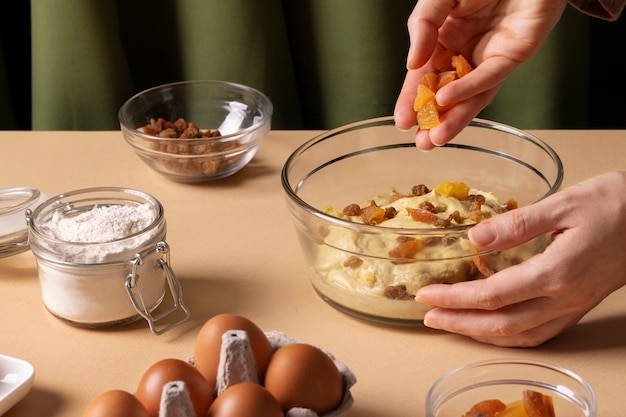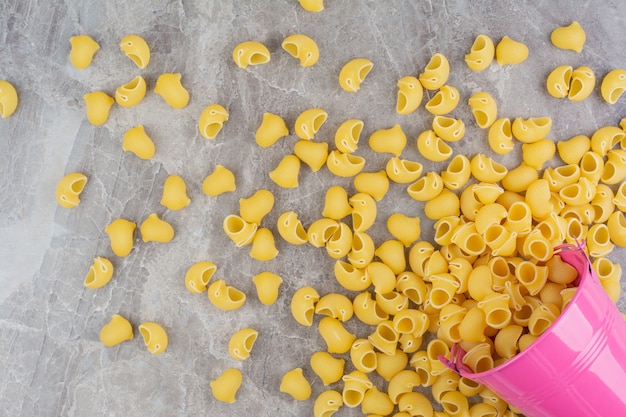Ah, tortellini. Those little parcels of pasta, filled with cheesy, meaty, or veggie goodness, are always a crowd-pleaser. But let's be honest, we've all stared at a package of tortellini, wondering, "How long do I cook these things?" And trust me, the answer isn't as simple as "just follow the package directions." There's a whole world of tortellini cooking wisdom out there, waiting to be unlocked.
This guide is your passport to that world. We'll explore the different types of tortellini, master the art of boiling, nail those cooking times, and even dive into some creative recipes. By the end, you'll be a tortellini champion, whipping up delicious pasta dishes like a seasoned chef.
(Part 1) Tortellini: The Many Shapes and Flavours

Let's start with the basics. Tortellini isn't just one thing. There's a whole universe of flavours and textures waiting to be explored. And the first thing to understand is that it's not just about the filling.
1.1. Fresh vs. Dry: The Pasta Dough Difference
Imagine a fresh, homemade tortellini. Thin pasta dough, filled with creamy ricotta, cooked for a few minutes until it's just barely tender. Now imagine a dry tortellini, the kind you find in the supermarket. The pasta dough is thicker, the texture is a bit sturdier, and it takes a little longer to cook.
Fresh tortellini is like a delicate flower, needing gentle care. Dry tortellini, on the other hand, is a bit more robust, ready for a longer swim in boiling water. This difference in pasta dough is crucial for understanding cooking times.
1.2. Filling Matters: From Creamy Cheese to Hearty Meat
Of course, we can't forget about those delicious fillings. Cheese tortellini, whether it's ricotta, mozzarella, or a blend, cooks a little faster than meat-filled tortellini. This is because the cheese melts and softens more quickly. Think of it like this: a cheesy filling is like a fluffy cloud, while a meaty filling is like a dense loaf of bread.
And then there are vegetable fillings, often a mix of spinach, mushrooms, or even a vibrant tomato-based blend. They fall somewhere in between cheese and meat in terms of cooking time.
1.3. The Shape Factor: Tortellini and Ravioli
While the shape of the tortellini might seem like a minor detail, it can actually affect cooking time. Traditional tortellini, with its characteristic ring shape, is designed to trap the filling and hold its shape even when cooked. But other shapes, such as square ravioli, might require a slightly different cooking time.
Remember, if you're not sure, always check the package directions. They often provide specific cooking times for different shapes and fillings.
(Part 2) Boiling Tortellini: The Perfect Plunge

Now that we've explored the world of tortellini, let's dive into the cooking process. It's not as complicated as it might seem, but there are a few key tricks to ensure your pasta comes out perfectly cooked.
2.1. The Right Pot: Give Those Tortellini Space
Start with a pot that's large enough for your tortellini to swim around freely. Crowded pasta is a recipe for a sticky, mushy mess. Think of it like a dance floor: a little extra space means everyone gets to move freely and enjoy themselves.
2.2. Plenty of Water: A Refreshing Bath for Pasta
Fill the pot with enough water to cover the tortellini by at least an inch. This ensures even cooking and prevents sticking. Imagine those tortellini taking a relaxing bath, soaking up the boiling water.
2.3. Salt Your Water: A Little Flavor Boost
Before you add your tortellini, toss in a generous pinch of salt. This not only adds a subtle flavour but also helps prevent the pasta from sticking together. Think of it as a seasoning bath for your pasta.
2.4. Bring it to a Boil: The Key to Perfect Pasta
Now, let the water come to a rolling boil. This is crucial for the cooking process. The boiling water will ensure even cooking and prevent the tortellini from becoming gummy.
(Part 3) Cooking Times: Finding the Sweet Spot

Here's where things get a little more specific. Cooking times vary depending on the type of tortellini you're using. But don't stress! We'll break it down for you.
3.1. Fresh Tortellini: A Quick Dip in the Boiling Water
Fresh tortellini, made with delicate pasta dough, cooks quickly. You're looking for a tender, but still slightly firm, texture.
Here's a general guideline for fresh tortellini cooking times:
| Type of Filling | Cooking Time |
|---|---|
| Cheese | 2-3 minutes |
| Meat | 3-4 minutes |
| Vegetable | 2-3 minutes |
Overcooked fresh tortellini becomes mushy, losing its delicate flavour. So, remember: fresh tortellini is all about that al dente texture.
3.2. Dry Tortellini: A Longer Swim for a Hearty Texture
Dry tortellini, made with a thicker pasta dough, needs a bit more time to cook. The pasta needs to absorb the water, becoming tender but not mushy.
Here's a general guideline for dry tortellini cooking times:
| Type of Filling | Cooking Time |
|---|---|
| Cheese | 5-7 minutes |
| Meat | 7-9 minutes |
| Vegetable | 5-7 minutes |
Dry tortellini can handle a bit more cooking time, but overcooking will make it soggy. So, keep a watchful eye on your pasta.
(Part 4) Checking for Doneness: The Proof is in the Pasta
So, your tortellini is bubbling away in the boiling water. But how do you know when it's ready? Let's explore a couple of methods.
4.1. The Bite Test: The Classic Method
This is the most reliable way to check for doneness. Use a slotted spoon to carefully remove a tortellino from the boiling water. Let it cool slightly and then bite into it. It should be tender but still have a slight firmness to it. If it’s too firm, it needs a few more minutes. If it’s mushy, it’s overcooked.
4.2. The Float Test: A Quick Shortcut (With a Caveat)
Here's a quick trick: after about half the recommended cooking time, start checking for tortellini that are floating to the surface. This usually means they're done. But remember, some types of tortellini might float even if they aren't fully cooked. So, it’s best to use the float test in conjunction with the bite test.
(Part 5) Draining: A Gentle Touch is Key
Your tortellini is perfectly cooked! Now, it's time to drain it. But don't just dump it in a colander! Remember, we want to preserve that delicate texture.
5.1. Use a Colander: A Gentle Release from the Boiling Water
Place a colander over the sink and carefully pour the pasta and water into it. Let the water drain completely, avoiding any splashing or shaking that might damage the pasta. Gentle is the name of the game here.
5.2. Don't Rinse: Preserve the Flavor of Your Pasta
Resist the urge to rinse your tortellini after draining. Rinsing washes away the starch that helps the sauce cling to the pasta, leaving you with a less flavorful dish. Let the pasta drain well and then move on to the next step.
(Part 6) Sauce Up: Creating Tortellini Magic
Now, the fun part: adding that perfect sauce. Tortellini is so versatile, it pairs beautifully with a wide range of sauces. Let's explore a few possibilities.
6.1. Classic Tomato Sauce: A Timeless Pairing
A simple tomato sauce is always a winning choice for tortellini. It's comforting, flavorful, and easy to make. Just simmer crushed tomatoes with garlic, onions, and herbs until it thickens. Add a splash of red wine for extra depth if you like.
6.2. Creamy Pesto Sauce: A Flavorful Twist
For a more vibrant and flavorful experience, try a creamy pesto sauce. Blend fresh basil, pine nuts, garlic, Parmesan cheese, and olive oil for a classic pesto. Then, add a dollop of cream for a richer and creamier sauce.
6.3. Hearty Meat Sauce: Comforting and Satisfying
If you're looking for a more substantial meal, a hearty meat sauce is the way to go. Simmer ground beef or pork with onions, garlic, and your favourite Italian herbs. Add a splash of red wine and some crushed tomatoes for a flavourful and comforting sauce.
(Part 7) Beyond the Basics: Getting Creative with Tortellini
Now that we've covered the fundamentals, let's venture into the world of creative tortellini dishes. There's so much potential for flavour and fun!
7.1. Tortellini Soup: Warm and Comforting
Transform your favourite tortellini into a hearty soup. Simmer the cooked tortellini in your favourite broth with vegetables like carrots, celery, and spinach. Top it with a sprinkle of Parmesan cheese and a drizzle of olive oil for extra flavour.
7.2. Tortellini Salad: A Light and Refreshing Option
For a lighter meal, try a tortellini salad. Combine cooked tortellini with fresh vegetables, like cherry tomatoes, cucumbers, and red onions. Toss with a vinaigrette dressing and top with crumbled feta cheese.
7.3. Tortellini Bake: Cheesy, Indulgent, and Delicious
For a cheesy and indulgent dish, create a tortellini bake. Layer cooked tortellini with your favourite sauce, vegetables, and cheese. Bake in the oven until the cheese is melted and bubbly.
7.4. Tortellini with Roasted Vegetables: A Flavorful and Healthy Combination
Want a satisfying and healthy meal? Pair your cooked tortellini with roasted vegetables like broccoli, asparagus, or bell peppers. The roasted vegetables add a smoky depth of flavour that complements the pasta perfectly.
(Part 8) FAQs: Tortellini Wisdom
Let's answer some common questions about cooking tortellini.
8.1. Can I Cook Tortellini in the Microwave?
It's not recommended to cook tortellini in the microwave. Microwave heat is uneven, leading to overcooked and undercooked pasta. Stick to the stovetop for a more consistent and delicious result.
8.2. Can I Freeze Cooked Tortellini?
Yes, you can freeze cooked tortellini. Spread the pasta out in a single layer on a baking sheet and freeze for about an hour. Then, transfer the frozen tortellini to a freezer-safe bag. To use, thaw the tortellini in the refrigerator overnight and reheat them in boiling water for a few minutes.
8.3. Can I Cook Tortellini with Other Pasta?
Absolutely! But keep in mind that different pasta shapes might have varying cooking times. Cook the pasta that needs the longest cooking time first, and then add the tortellini for the remaining few minutes.
8.4. What if My Tortellini is Overcooked?
Don't despair! Overcooked tortellini can still be salvaged. Add it to a sauce and simmer it for a few minutes to absorb excess liquid. The sauce will help to restore some of the pasta's firmness and flavour.
8.5. What Are Some Good side dishes for Tortellini?
Tortellini is a versatile dish, perfect for pairing with various side dishes. Here are a few ideas:
- A simple green salad
- Roasted vegetables, like broccoli or asparagus
- Garlic bread
- A side of rice or quinoa
- A crusty bread baguette for dipping in the sauce
Now you're ready to confidently tackle any tortellini challenge. With this guide in hand, you'll be creating delicious pasta dishes in no time. Remember, the key is to have fun, experiment with different flavours, and enjoy the process! After all, cooking is a celebration of food and sharing it with those you love.
Everyone is watching

How to Cook Frozen Lobster Tails Perfectly: A Step-by-Step Guide
RecipesLobster. Just the word conjures up images of lavish meals, special occasions, and a taste of luxury. But let's...

Pigs in a Blanket Cooking Time: How Long to Bake for Perfect Results
RecipesAh, pigs in a blanket. Just the name conjures up images of those delightful little parcels of crispy pastry en...

Pork Fillet Cooking Time: How Long to Cook It Perfectly
RecipesPork fillet, or tenderloin as it's sometimes called, is a real favourite in our house. It's so versatile, and...

The Ultimate Guide to Tender, Juicy Pulled Pork
RecipesRight, let's talk pulled pork. It's one of those dishes that just screams "comfort food," doesn't it? I mean...

The Ultimate Guide to Cooking Sweet Potatoes: From Roasting to Mashing
RecipesSweet potatoes. Just the name conjures up images of warm, comforting dishes, bursts of vibrant color, and a to...
